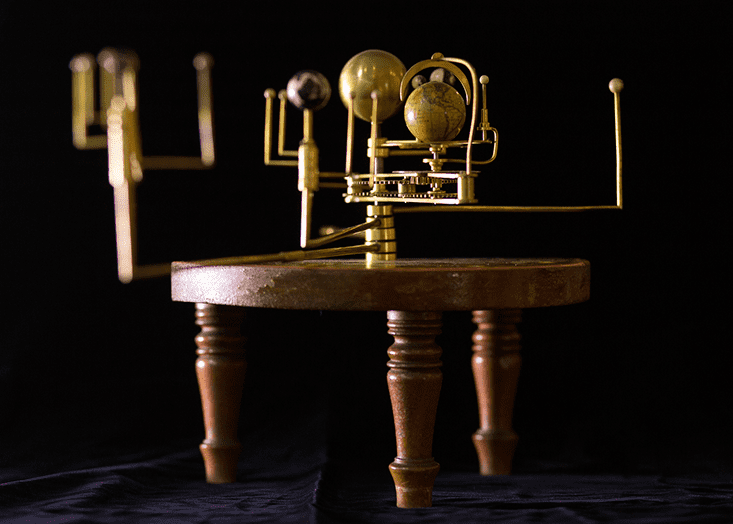Sometime between November 11 and 18, 1915, Albert Einstein began a brief calculation. In 14 numbered steps he analyzed the orbit of Mercury to explain a minor anomaly that had defied astronomers for more than 50 years.
Sorting out a tiny detail of celestial mechanics doesn’t seem terribly exciting—and yet Einstein reported to friends that when he saw the last numbers appear, confirming that his theory matched observation, he felt his heart literally shudder in his chest. The reason: Correctly analyzing the orbit of Mercury was the first confirmation of his account of gravity, the General Theory of Relativity. This is just as Richard Feynman would later say science works. It is, he would say, “a special method of finding things out.” But what makes it special? The way its answers get confirmed or denied: “Observation is the judge”—the only judge as the catechism goes—“of whether something is so or not.”1

This is what every beginning scientist learns to call the scientific method, which goes pretty much as this online guide puts it: You “Construct a Hypothesis” to “Test with an Experiment” (or an observation), and then you “Analyze Results” and “Draw Conclusions.” If the results don’t match your expectation, it’s back to step one.
Laid out like that, the scientific method becomes an intellectual extruder: data in one end, knowledge out the other. There’s only one problem: Science—even when it’s Albert Einstein at the controls—doesn’t work like that.
The case for Vulcan was too strong—it seemed—for mere observation to wreck such a beautiful idea.
To see why, consider those who worked on Mercury before Einstein solved the problem. Urbain Jean-Joseph Le Verrier was the greatest mathematical astronomer of the mid-19th century. In 1846, he discovered Neptune “at the tip of his pen”—using Newton’s law of gravity to predict the existence of an unseen body, whose gravitational tug on Uranus could account for wobbles in the known planet’s orbit. Nine years later, he analyzed Mercury’s motion and found another anomaly—a tiny shift in its orbit that couldn’t be explained by Venus or Jupiter or any other object in the solar system. Using the same logic that had led him to Neptune, Le Verrier again predicted the existence of an unseen planet very close to the sun. That hypothetical object swiftly gained a name: Vulcan.

The chain of reasoning was impeccable—and apparently confirmed when the first reports of Vulcan sightings arrived, just months after the prediction. Le Verrier himself validated the very first claim—and even though none of the dozen or more “discoveries” announced over the next two decades were replicated, he remained convinced of the reality of Vulcan until his death.
The last person to be certain he’d actually seen Vulcan was famed asteroid hunter James Craig Watson, director of the Michigan Observatory. Viewing a total eclipse of the sun in 1878, Watson saw very close to the limb of the sun “a ruddy star whose magnitude I estimated to be 4 ½”—just where Vulcan ought to have been.
Two years later Watson died, like Le Verrier going to his grave convinced that he’d found a new planet. Both men were good scientists, Le Verrier legitimately a great one. Le Verrier performed enormously difficult calculations that applied Newton’s theory to the fine-grained structure of reality. The logic behind his prediction of Vulcan was impeccable. His identification of the anomaly in Mercury’s orbit was and remains correct: Mercury orbit really does wobble, just as he said it did.
Watson did what Feynman said should be done: Put theory to the test of direct observation of nature. But here the simple picture of the scientific method as a perfect machine for making knowledge breaks down: Neither man accepted the verdict nature tried to render. The case for Vulcan was too strong—it seemed—for mere observation to wreck such a beautiful idea. They wanted to believe, and they did, to the end.
It was that conflict of ideas, and not some confounding observation, that led him to the ultimate prize.
Why? Because, simply and unsurprisingly, scientists, like any human, both think and feel. They are subject to desire, ambition, pleasure in perceived beauty. In the long run—as when Einstein finally offered a new idea to replace Newton’s, and thus explained away the anomaly that seemed to demand Vulcan—science truly is self-correcting. Day by day, though, human hopes and expectations constrain what any single scientist can bring him or herself to accept—and that’s not an indictment of either the individual or the enterprise. Rather, it is how imperfect humans collectively (and fitfully) achieve a progressively more accurate grasp of the material world.
That’s true even for the greatest scientists, and it holds even when what seems like a breakthrough really is one. In the cartoon version of the scientific method, Einstein’s pursuit of gravity should have begun from the realization that Mercury’s misbehavior suggested a problem with Newton’s gravitation. But that’s not what happened. Instead, Einstein noticed a contradiction between his first great result, the special theory of relativity, and Newton’s ideas. It was that conflict of ideas, and not some confounding observation, that led him to the ultimate prize.
Vulcan in the 21st century is just another of the uncounted plausible ideas that didn’t work—and it’s mostly forgotten, along with those who championed it. General relativity stands as one of the greatest individual accomplishments in the history of science. And yet, Le Verrier and Watson each thrilled at the appearance of Vulcan in their mathematics and their telescope; Einstein’s heart leapt as he realized that he had just captured a piece of nature no one before him had seen. There’s no method in such moments. But there is a lot of science—as scientists live it.
Thomas Levenson is a professor of science writing at MIT. He is also a writer and documentary film maker; his most recent book is The Hunt For Vulcan.
Reference
1. Feynman, R. The Meaning of It All Basic Books, New York, NY (1998).



